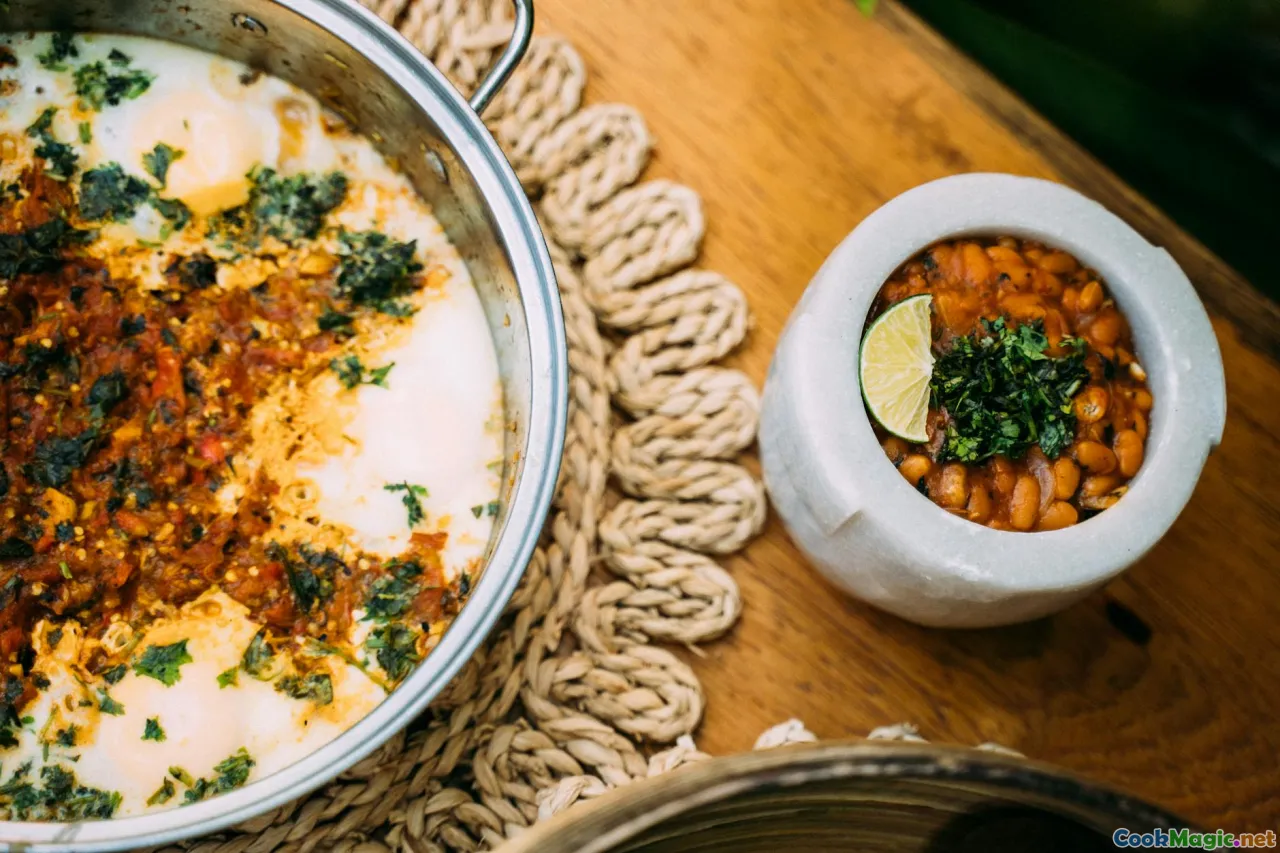Crafting Ideal Serbian Pasulj Bean Stew Consistency
8 min read Discover the secrets to achieving the perfect consistency in Serbian Pasulj, blending tradition, technique, and flavor for an authentic culinary experience. May 31, 2025 06:00
Crafting Ideal Serbian Pasulj Bean Stew Consistency
Serbian cuisine is a rich tapestry woven from centuries of tradition, history, and a deep love for hearty, soulful dishes. Among these, Pasulj, a traditional bean stew, stands as a cornerstone of Serbian culinary identity. This humble yet profoundly satisfying dish embodies the essence of Balkan comfort food—robust, warming, and bursting with flavor.
But behind the comforting bowl of Pasulj lies a subtle art: crafting the perfect consistency. Achieving that ideal texture—neither too thick nor too watery, with beans tender yet intact—is an art form that transforms a good dish into an unforgettable culinary experience. Today, we delve into the depths of Serbian cooking techniques, cultural significance, and personal insights to master the craft of Pasulj's perfect consistency.
The Cultural and Historical Significance of Pasulj in Serbia
Pasulj is more than just a stew; it is a symbol of Serbian hospitality and resilience. Historically, beans were an accessible, affordable source of protein for peasants and rural families, especially during harsh winters when fresh meat was scarce. Over generations, Pasulj became a staple, a dish that carried stories, family traditions, and communal memories.
In Serbian households, preparing Pasulj is often a communal activity—cooking slowly over an open flame, sharing stories, and passing down recipes from grandmother to granddaughter. The dish’s simplicity allows the ingredients' quality and cooking technique to shine, making the consistency a reflection of both tradition and personal touch.
The Core Ingredients and Their Impact on Consistency
Mastering the perfect Pasulj requires understanding the role of each ingredient:
- Dried Beans (typically white or kidney beans): The backbone of the dish. Their size, age, and pre-soaking influence how they break down and their final texture.
- Water or Broth: The medium that determines the stew’s thickness. The amount and timing of adding liquid are crucial.
- Onions, Garlic, and Carrots: Aromatic vegetables that soften during cooking, contributing to the stew's body.
- Smoked meats (optional): Sausages, smoked ribs, or ham hocks add flavor and richness, affecting the stew’s density.
- Seasonings: Salt, pepper, paprika, and bay leaves enhance flavor and can influence how beans gelatinize.
Techniques for Achieving the Ideal Consistency
1. Pre-Soaking the Beans
Soaking dried beans overnight in cold water is essential. It softens the beans uniformly, reduces cooking time, and helps prevent the stew from becoming overly thick or mushy. A longer soak ensures the beans absorb water fully, aiding in controlled softening.
2. Cooking Low and Slow
Serbian cooks swear by slow simmering over low heat. This gentle approach allows beans to break down gradually, releasing their natural starches, which contribute to the stew's desirable viscosity. Rushing the process with high heat risks uneven cooking and an undesirable texture.
3. Controlling the Liquid
Initially, add enough water or broth to cover the beans generously. As the beans soften, adjust the liquid—add more if the stew thickens too much or reduce to thicken further. A key tip is to avoid stirring too vigorously, which can break beans apart prematurely.
4. The Role of the Acid
Adding acidic ingredients like vinegar or tomatoes too early can toughen the beans. It's best to introduce these near the end of cooking to preserve the beans’ tender texture.
5. Using the Right Thickening Agents
For a creamier consistency, some cooks Mash a few beans with a ladle or use a blender to purée a portion of the stew. This technique enriches the texture without altering the traditional spirit.
6. Adding Meat for Depth
Including smoked meats not only enhances flavor but also introduces fats and gelatin, naturally thickening the stew. The rendered fat and collagen contribute to a velvety mouthfeel.
Personal Insights and Tips from Serbian Culinary Masters
Having cooked Pasulj alongside seasoned Serbian grandmothers and home cooks, I’ve learned that mastering consistency is as much an emotional process as a technical one. Here are some personal insights:
- Patience is key. Rushing the cooking process often results in uneven textures.
- Taste as you go. Adjusting seasonings and liquid levels during cooking helps achieve that perfect, balanced consistency.
- Use quality dried beans. Older beans tend to stay firm, whereas fresh, well-stored beans soften uniformly.
- A splash of vinegar or lemon juice at the end brightens the flavors and subtly adjusts the stew’s body.
The Final Touch: Serving Pasulj at Its Best
Once the stew reaches the perfect consistency—thick enough to cling to a spoon but still fluid enough to scoop comfortably—it's time to serve. Traditional Serbian Pasulj is often accompanied by crusty bread, a dollop of kajmak (creamy dairy spread), or fresh chopped onions and peppers.
The visual appeal of a well-made Pasulj is as inviting as its aroma. The glossy beans, tender chunks of meat, and vibrant herbs create a dish that is both rustic and refined.
Conclusion: Embracing the Art of Consistency
Crafting the perfect Serbian Pasulj is a dance between tradition, technique, and intuition. It’s about respecting the ingredients, understanding the cooking process, and adding a personal touch that elevates the humble bean stew into a culinary masterpiece.
So next time you set out to make Pasulj, remember: patience, gentle heat, and attention to detail are your best friends. With these, you’ll create a dish that not only warms the body but also nourishes the soul—just as Serbian grandmothers have done for generations.
Enjoy the journey of mastering Pasulj, and may your stew always find that perfect, comforting consistency that makes it a beloved staple in your kitchen.









